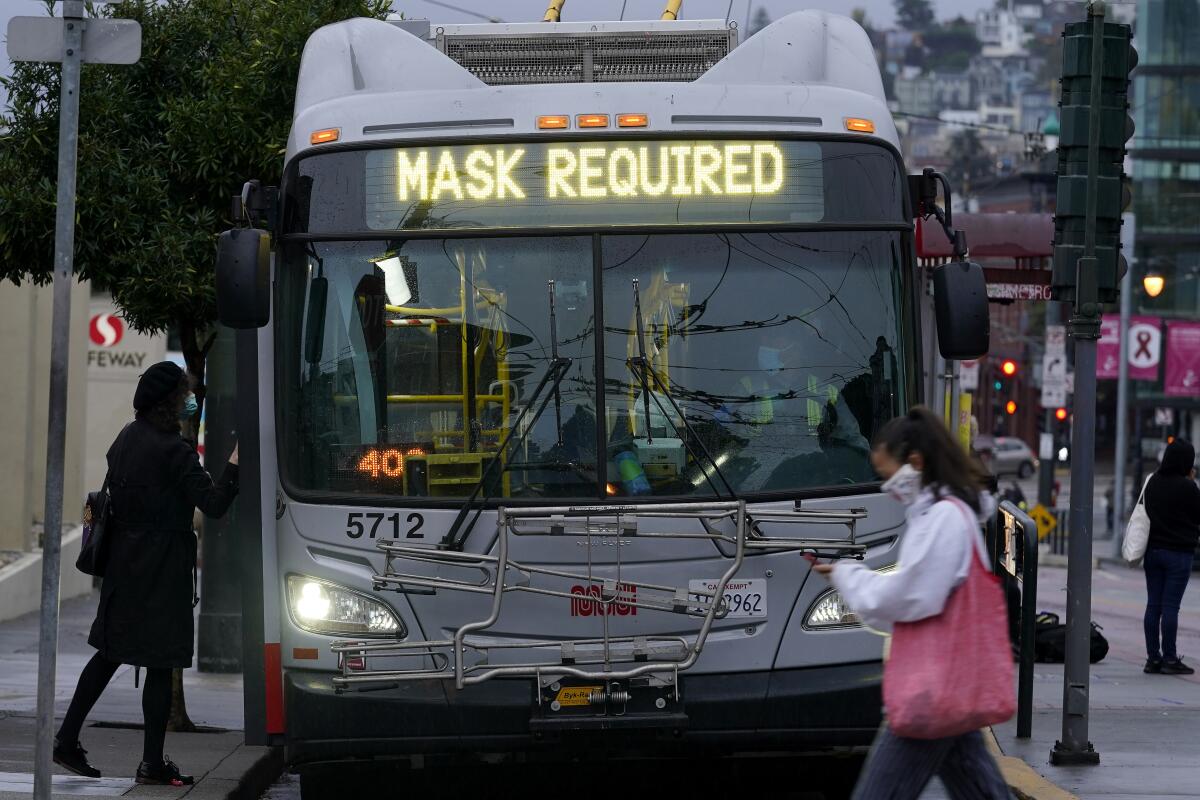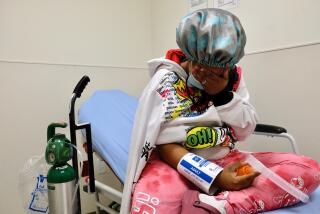Coronavirus infection rate hits unprecedented levels in California and officials worry how bad it will get

- Share via
SAN FRANCISCO — California capped a week of unprecedented coronavirus spread, with officials unsure how much worse it will get while placing hope that new restrictions could help slow infections as the holidays approach.
The staggering rise in cases caught many off guard, with long lines at some testing facilities and worries about whether Thanksgiving will cause even more people to be infected.
For the seven-day period that ended Friday, an average of 10,981 people in California were reported to be infected daily — a number that has more than doubled in just the last two weeks. That is even worse than the peak in the summer, which until now had been California’s worst spike of COVID-19, according to a Times data analysis.
For the first time, California has recorded three days in the last week where more than 13,000 new infections a day have been recorded.
And hospitalizations are up 61% statewide over just the last two weeks.
“The data looks really bad right now,” said Los Angeles County Public Health Director Barbara Ferrer on Friday. “There’s just a lot more people that are infected.”
The biggest concern of public health officials now is whether people will heed the warnings and avoid large Thanksgiving gatherings. The U.S. Centers for Disease Control and Prevention urged Americans to skip holiday travel this year, a recommendation echoed by local and state officials. The country is now averaging more than 1,300 COVID-19 deaths per day over the past seven days — the highest level since the calamitous spring in and around New York City.
“Plenty of people will congregate and nobody will get sick and they’ll go ‘nah, nah, fake news,’” said Dr. Mark Dworkin, an infectious disease specialist at the University of Illinois, Chicago. “But there will be other families that will be devastated and it will be very bad for them. If you want to play Russian roulette with COVID, that’s your right, but I think it’s foolish.”
Conditions are worsening across the state. San Francisco, which until recently was a COVID-19 success story, is expected to require more closures — such as indoor restaurant dining and gyms — as early as next week as cases spike.
“If our numbers continue to go up at this rate, we could conceivably have hundreds of people in the hospital by late December or early January according to our models,” Dr. Grant Colfax, the San Francisco director of public health, said Friday.
But few places are facing a more critical crisis than Los Angeles County, home to more than 10 million people.
The county recorded the highest average daily number of cases so far in the pandemic, with an average of 3,613 people reporting new infections daily over the five-day period that ended Friday. That number has nearly doubled in just two weeks — a sign of how the virus is spreading faster than ever before.
Los Angeles County recorded 4,158 cases Friday, according to an independent tally by The Times, a pace that places the region at risk of needing to order further restrictions on business operations. On Thursday, L.A. County reported its largest number of cases in a single day in the history of the pandemic: 4,943.
Hospitalizations continue to climb in L.A. County, rising more than 75% in the last month. The coronavirus test positive rate has jumped considerably, from 3.9% at the start of November to 7.1% on Wednesday.
Daily COVID-19 deaths may also be starting to increase in L.A. County. For the seven-day period that ended Friday, an average of 22 people died every day from COVID-19, the worst such tally since Oct. 1, and a 50% increase from earlier in the week.
“This is a serious concern for all of us,” Ferrer said. “This level of acceleration threatens our healthcare system and that threatens care for every single person in this county — for people who have a heart attack, for people who need emergency surgery.”
The county said if case numbers worsen, it plans to limit restaurants to take out and delivery only and potentially impose a new stay-at-home order similar to the one issued in the spring, known as Safer at Home.
Officials expected to give three days’ notice before a new health order goes into effect.
“I still hope that we don’t have to go to ‘Safer-at-Home,’ and that we are able to in the next few days start turning this around,” Ferrer said Friday. “If we can’t get this back under control, that is unfortunately where we’re headed: Trying to limit as much as possible interactions with people not in our households.”
The county is urging people to avoid holiday travel. If people decide to travel anyway — such as college students returning home for the next month or two — Ferrer said they should quarantine themselves in a room alone for 14 days; avoid sharing a bathroom or clean it every time if they do share one; not eat with others in the household; and have people in the home wear masks at all times indoors.
If the students haven’t been able to quarantine for 14 days at their destination, Ferrer suggested they not take part in Thanksgiving festivities to reduce the chance of infecting others.
“We still urge college students to please not return just for the Thanksgiving holiday,” Ferrer said. “There may be some people that are returning and planning to stay here and they’re not going back to their schools — in which case they have plenty of time to do that 14-day self-quarantine.”
The quarantine is particularly important if people in the home are elderly or have underlying conditions that put them at risk for severe illness and death from COVID-19, such as high blood pressure, diabetes, obesity, high cholesterol, or kidney and lung disease.
The infection rate is rising for several reasons. Among them are evidence that people are increasingly gathering and visiting other people’s homes while failing to wear masks, and more outbreaks at worksites.
Because there are now so many more contagious people — reflected in the rising test positivity rate, which has more than doubled in recent weeks — “it’s a lot easier for people to infect other people,” Ferrer said.
California is imposing a mandatory limited overnight stay-at-home order starting Saturday that will prohibit all gatherings with members of other households and all nonessential activities outside the home from 10 p.m. to 5 a.m. in counties that are in the most restrictive category of the state’s reopening plan, the purple tier. Roughly 94% of Californians, 37 million people, live in the 41 counties currently in that tier.
The limited stay-at-home order still permits people to leave their home in the late night hours as long as they don’t gather with people from another household. Leaving home to go for a late night walk with members of your household, walk the dog, pick up takeout food, or go grocery shopping is still permitted. The order goes into effect Saturday and lasts through Dec. 21, though it could be extended.
Officials stressed that the sacrifices made during the holidays could pay off later.
“The best gift we can give this season is the gift of good health so we can all be here for the vaccine,” San Francisco’s Colfax said.
Times staff writers Maura Dolan in San Francisco, Deborah Netburn and Iris Lee in Los Angeles, as well as the Associated Press, contributed to this report.
More to Read
Sign up for Essential California
The most important California stories and recommendations in your inbox every morning.
You may occasionally receive promotional content from the Los Angeles Times.













